
The proposals from the Equitable Education Fund (EEF) Thailand have been shaped by contributions from agencies at local, national, and international levels to ensure the future sustainability of small schools, whether Protected or Non-Protected and to strengthen their genuine connection to the community.
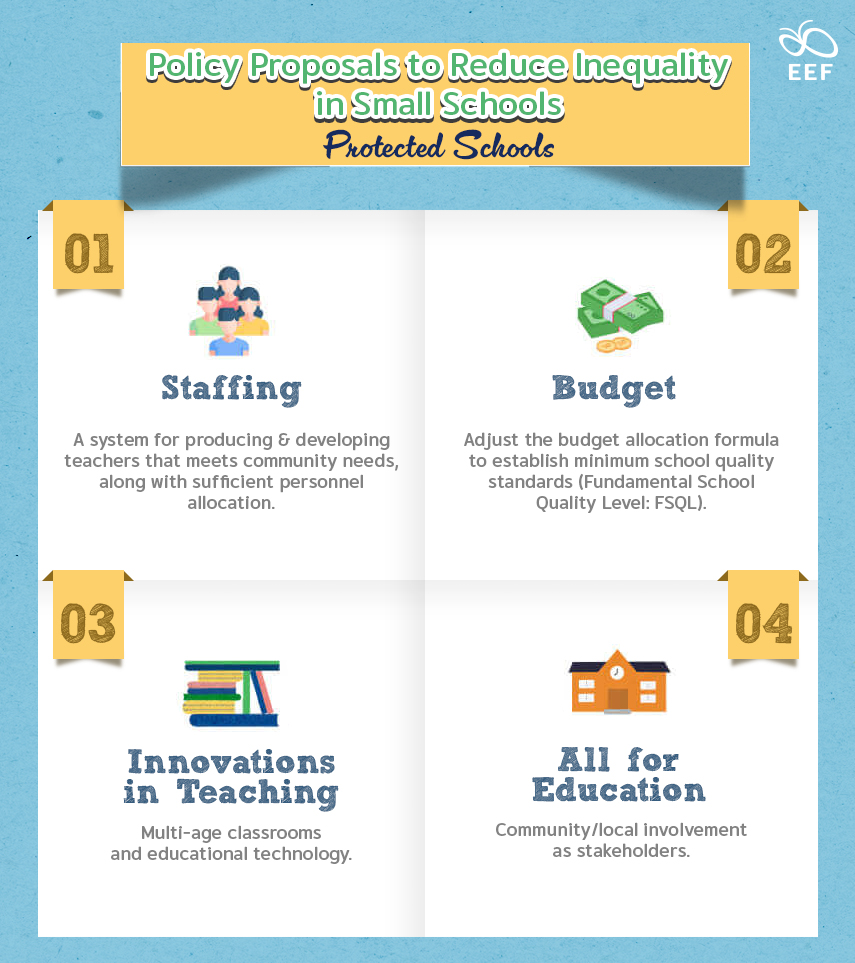
There are four policy proposals for small Stand Alone or Protected Schools. These are small schools located on islands or in highland areas that cannot be merged or closed, according to the Cabinet’s resolution, due to the lack of other schools within a 6-kilometer radius. There are approximately 1,500 such schools in the country, with some located in national parks or reserved forests, requiring additional support. These schools often represent the only hope for education in their communities. By supporting them in continuing to provide education, we can help sustain hope in these areas.
1. Staffing
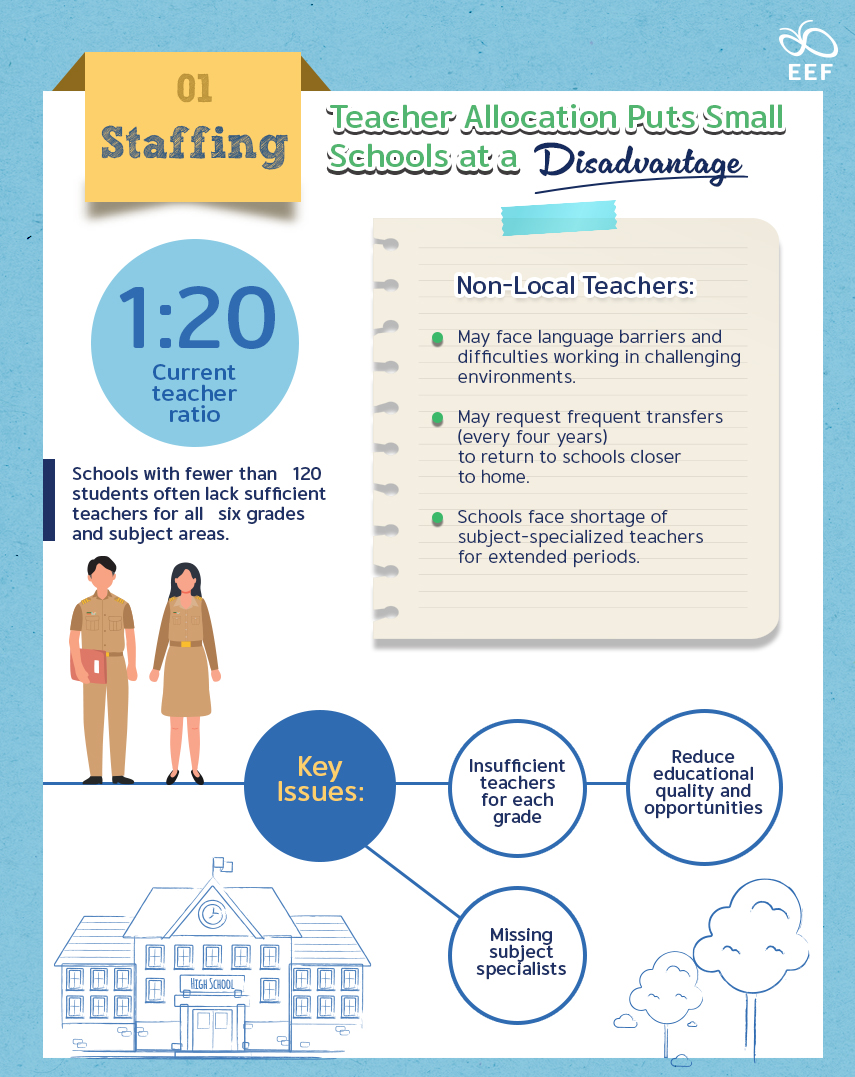
The issue of insufficient teachers for every class or subject has been a long-standing problem in these schools, which struggle to retain long-term staff. The Equitable Education Fund (EEF) Thailand, in collaboration with the Ministry of Education and the Ministry of Higher Education, Science, Research, and Innovation, has developed the ‘Homegrown Teacher’ Project. This initiative recruits local individuals who wish to become teachers in their communities, trains them, and appoints them to schools in their hometowns, thereby addressing the issue of teacher transfers. For the first time, 19 teacher education institutions across the country are working together on this project. After their appointments, these institutions will continue to support the teachers for the next six years. This initiative helps to reduce inequality by involving higher education institutions in supporting basic education.
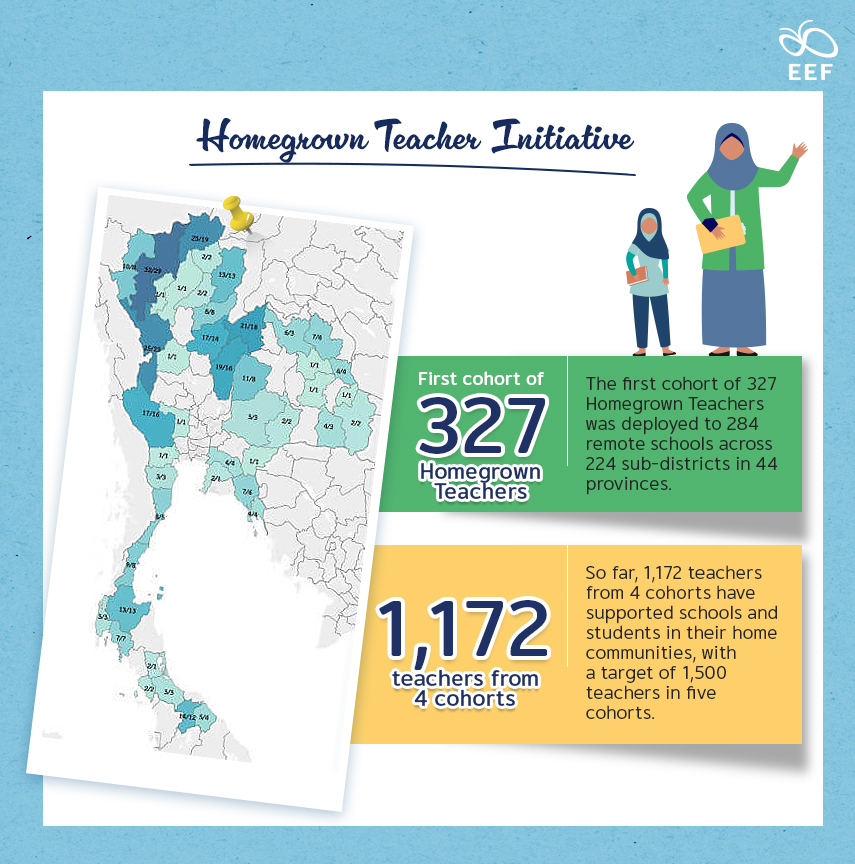
In the 2024 academic year, 327 teachers from the first cohort of the Homegrown Teacher Project will be assigned to 284 schools in remote areas, distributed across 224 sub-districts in 44 provinces nationwide. Over the next five years, a total of 1,500 ‘Homegrown Teacher Project’ teachers will be trained. The EEF Thailand will also collaborate with relevant agencies to expand the project to address teacher shortages in specific subject areas, such as special education.
2. Budget

Currently, funding is tied to the number of students, resulting in allocations that do not adequately meet the needs of small schools. The budget formula requires adjustment, taking into account not only the number of students but also factors such as distance, remoteness, and hardship. This change will enable better resource distribution to schools. The Ministry of Education may not require additional funding, as a new formula could allow for the reallocation of excess funds from large schools to smaller ones. This adjustment would help reduce inequality in the distribution of educational resources and could be implemented within a single budget year. The Equitable Education Fund (EEF) Thailand has developed this formula through research in collaboration with several agencies. For example, the Equitable Education Fund (EEF) Thailand partnered with the Faculty of Economics at Thammasat University to create an equity-based budgeting model, which could assist the Ministry of Education and the Budget Bureau in determining how funds should be allocated to schools with special needs or those in remote areas.
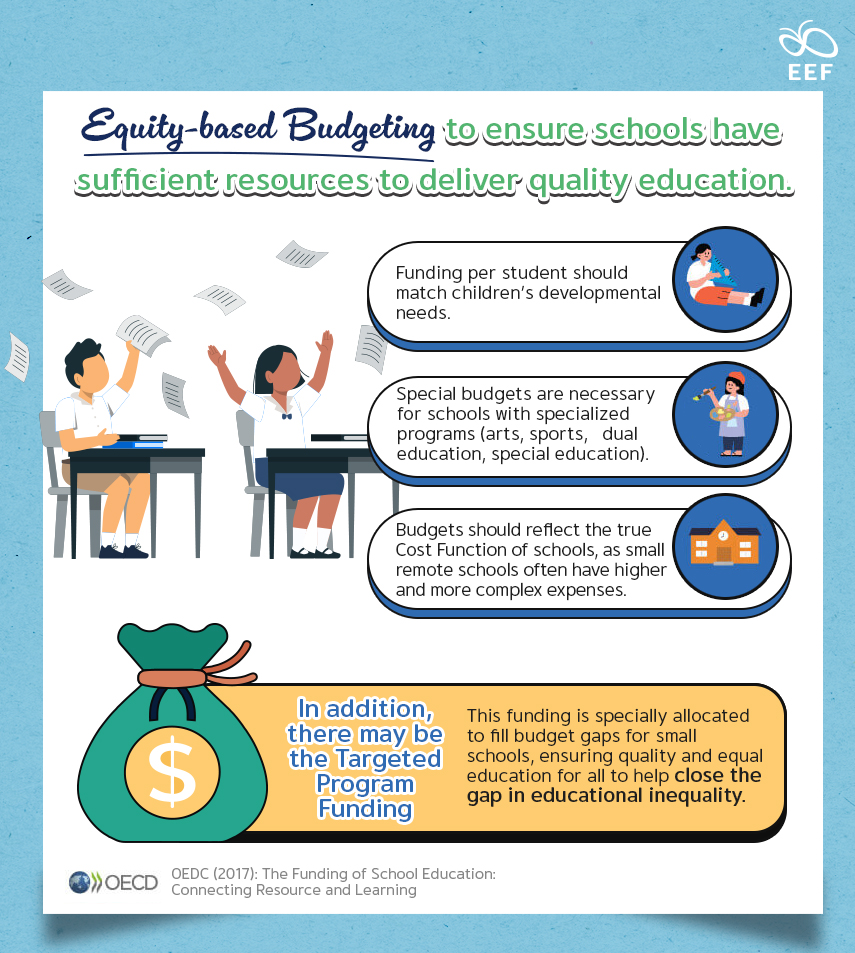
In addition to adjusting the per-student funding formula, there is a need to revise capital investment budgets. The Equitable Education Fund (EEF) Thailand has collaborated with the World Bank on a project called the Fundamental School Quality Level (FSQL), which utilizes donations to upgrade schools. This initiative has already been implemented in Ratchaburi, enabling schools to be enhanced using this new formula, which establishes minimum quality standards for infrastructure, staff, and teaching management. This formula ensures that educational investment budgets are allocated in a way that provides schools with sufficient resources to offer equitable and quality education, including adequate infrastructure and enough teachers for the number of students.
These two budget reform proposals cover the majority of the Ministry of Education’s budget, approximately 80-90%, with 60% allocated for staffing, 10% for subsidies, and 10% for capital investment.
3. Innovations in Teaching
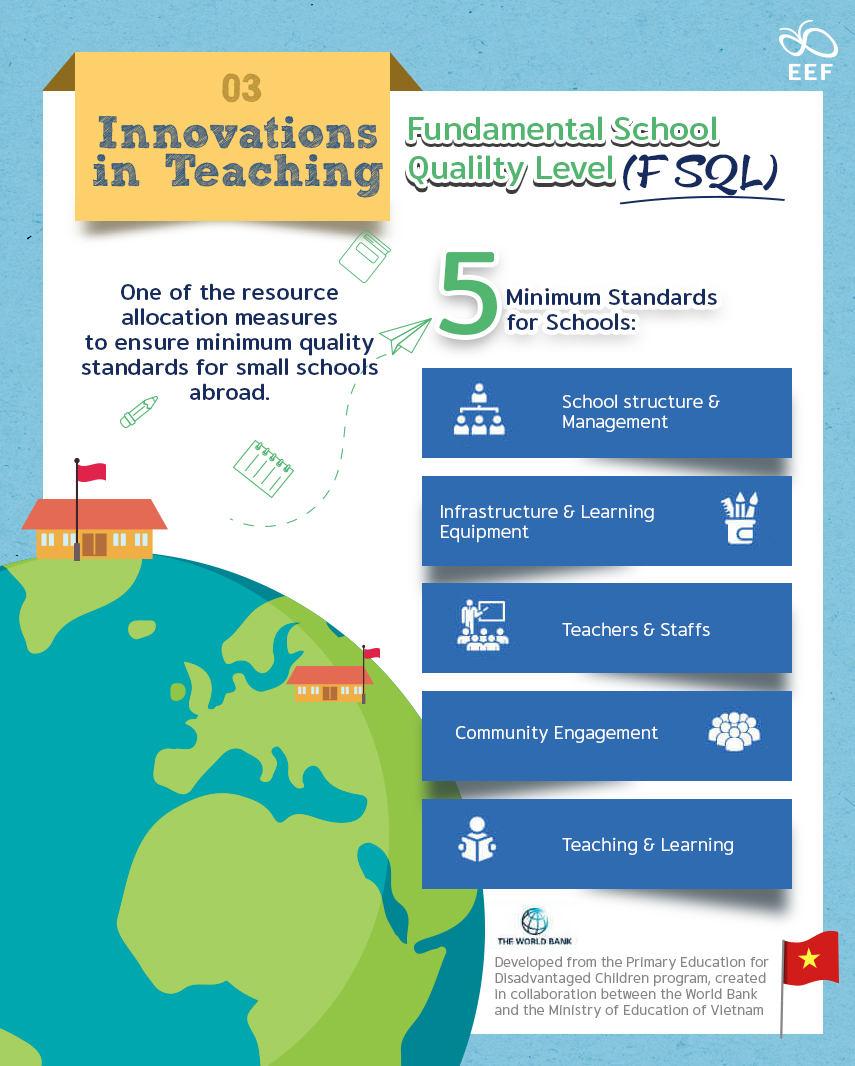
For small schools, expecting to have a full complement of teachers for each class in a short time frame is quite challenging. There is a need for an innovation known as the multi-age classroom, where children do not need to be of the same age to learn together. For example, students aged 6 to 9 can be mixed in one classroom, allowing teachers to employ innovative methods for multi-grade levels. Many countries with remote and underserved areas, such as New Zealand, have been using this approach for decades. All faculties of education and teacher training institutions should prepare teachers to manage multi-age classrooms effectively.
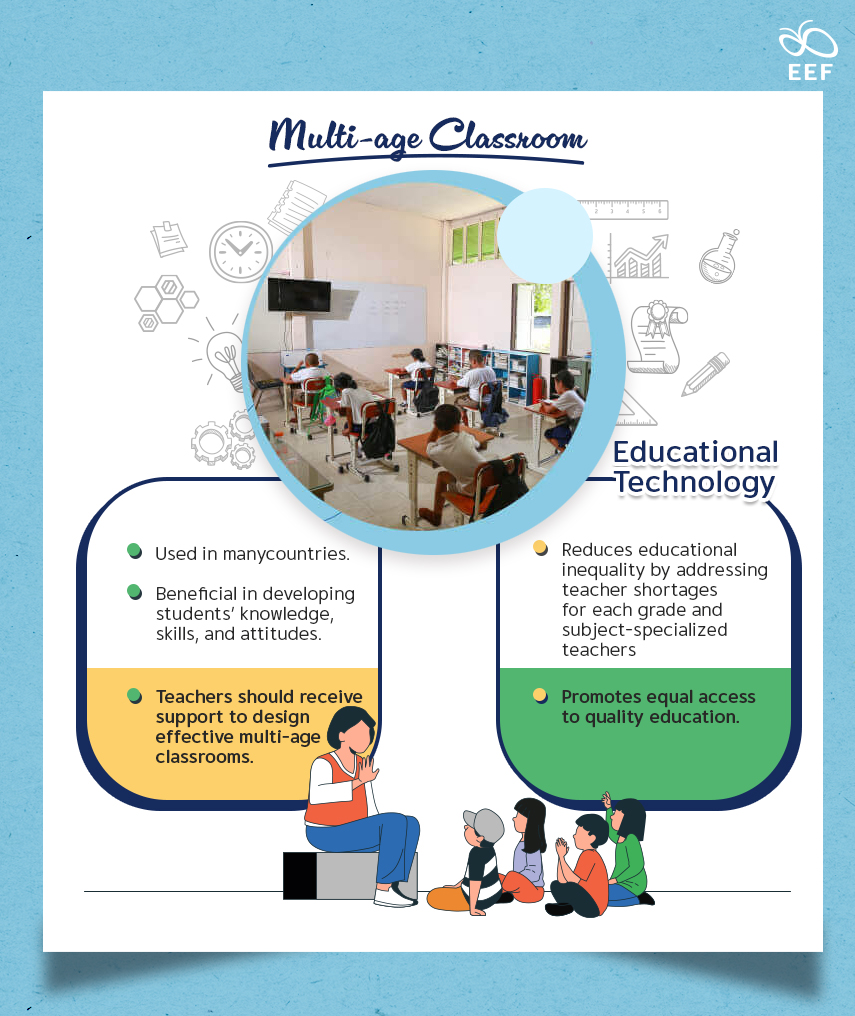
Additionally, there must be support for utilizing technology to enhance teaching. Teachers and students should be able to incorporate current technology into their lessons, such as the internet and laptops, connecting classrooms to the wider world. This could transform classrooms into smart classrooms in the future, and many other innovations could be applied in this context.
4. Community Engagement
“All for education,” aligned with the Minister of Education’s policy, emphasizes the importance of collaboration. The community’s dream is to provide quality learning opportunities for their children, who represent the future hope of the community. We must encourage community participation in managing education within schools starting today. This involves engaging the private sector, local leaders, and community experts, with successful examples from Ratchaburi and other provinces.
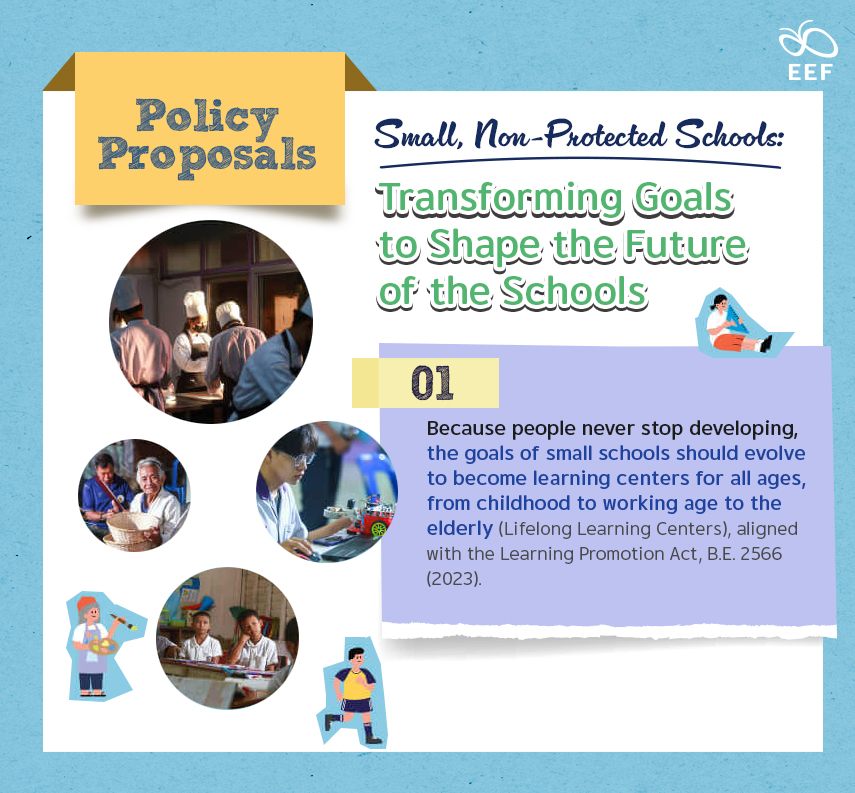
For small schools that are not classified as protected schools, achieving different outcomes requires working together to redefine their goals and transform their future. It is undeniable that individuals of all ages in Thailand should never stop developing; growth can continue at any stage of life. Community members, from preschool children to the elderly and working-age individuals, can all benefit from self-development opportunities at schools. We could transform small schools into lifelong learning centers, focusing on foundational and vocational skills for all ages, in line with the upcoming Learning Promotion Act, B.E. 2566 (2023), which the Department of Learning Encouragement is expanding.
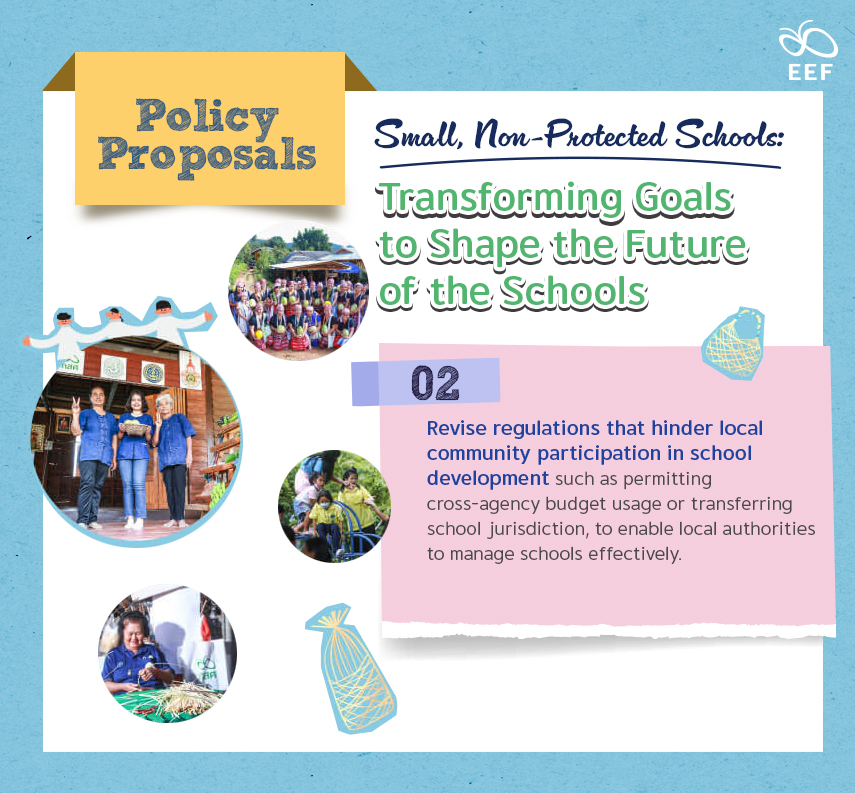
If we can shift to a model of lifelong learning, in that case, various agencies will be able to support schools, including the Ministry of Labor, the Ministry of Higher Education, Science, Research, and Innovation, local administrative organizations, and the Ministry of the Interior. They can facilitate the flow of resources to these schools, ensuring they become genuine and sustainable learning spaces for the community. Educators will also need to adjust their roles, focusing not only on teaching children but also on engaging in other missions.
Beyond redefining goals, there is a need to reform regulations. After years of on-the-ground experience, it has been found that local leaders, such as the Chief Executive of the Provincial Administrative Organization (PAO) and mayors, want to allocate local funds to schools but are often hindered by conditions imposed by the State Audit Office, which may require refunds. Many school directors have had to write formal requests to the Secretary of the Office of the Basic Education Commission (OBEC) to confirm that they have no remaining budget from the commission to support the schools. A response from OBEC is necessary for mayors to use in their budget planning, and this process can take years to complete. If regulations are adjusted, the Ministry of Labor, the Ministry of Higher Education, Science, Research, and Innovation, and the Ministry of the Interior can allocate resources to support these schools, bringing many more resources to small educational institutions in the future.

